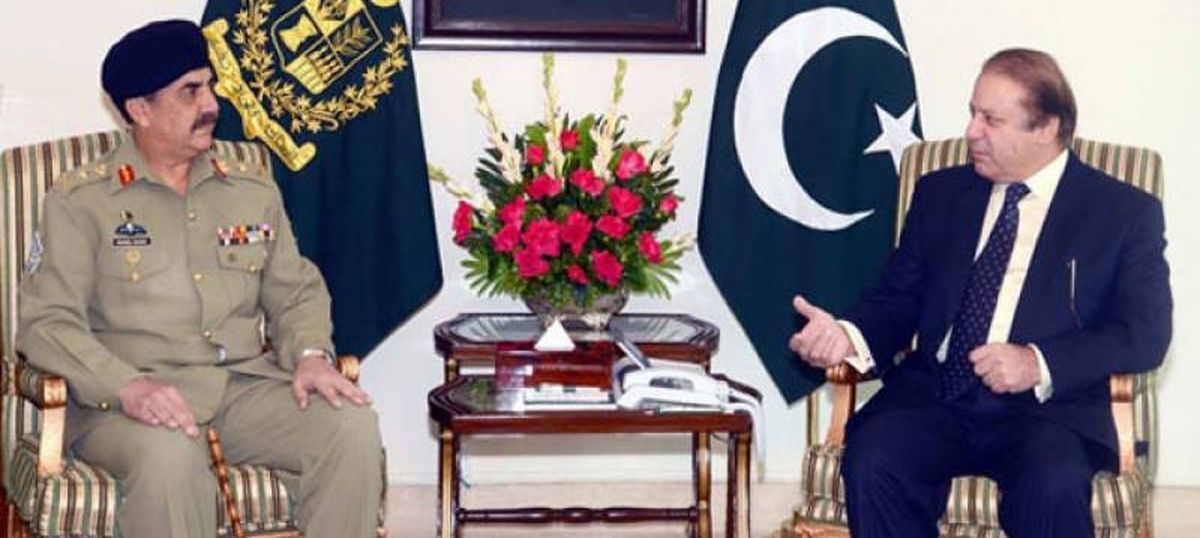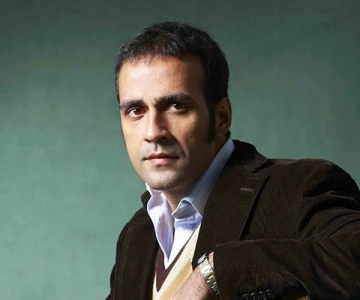The real issue is about fighting non-state actors, the ongoing street protests and Nawaz Sharif’s impending decision to appoint a new army chief.
He declared his independence after coming to power during his first tenure as the prime minister in 1990. He lasted until 1993. Since then there has existed a perennial state of distrust between the two pillars of power in Pakistan that reside in its most populous province, the Punjab.
Thirty five years after he was sworn in as the finance minister of the Punjab province, Nawaz Sharif today runs a mega political and business empire that even a decade-long military rule under General Musharraf could not undo.
For now, Nawaz Sharif remains electorally formidable and is likely to win another election.
The current climate of distrust between the two centres of power manifested itself in the form of travel restrictions imposed last week on Cyril Almeida, a columnist and assistant editor of a respected newspaper, Dawn. The ban was lifted on Friday.
Almeida’s report, based on conversations with “individuals present in … crucial meetings, narrated how in a blunt, orchestrated and unprecedented warning, Pakistan’s civilian government told their military counterparts off and asserted that they act against militant groups if Pakistan’s diplomatic isolation had to be avoided.
In what was described as a stunning and unexpectedly bold intervention, the prime minister’s younger brother, Punjab Chief Minister Shahbaz Sharif, was also reported to have complained that whenever action has been taken against certain groups by civilian authorities, the security establishment has worked behind the scenes to set the arrested free.
Not unexpectedly, a political storm erupted.
The government denied it, not once but three times, and then a meeting between the prime minister and the army chief led to the initiation of an inquiry into the sources of the so-called leaks of the meeting’s discussion and Almeida was put on the Exit Control List, a draconian executive instrument designed for criminals but abused at will in Pakistan.
Pakistan’s interior minister has defended the action, saying an inquiry was underway.
Many theories
Why did the government take such a self-defeating approach?
The popular consensus in Pakistan is that the civilian government first leaked it, gained mileage and then threw the journalist under the bus.
Another view, less dominant in the Pakistani media, is that hounding Almeida was done to appease the military leadership that was reportedly not happy with the way Dawn presented its story. We are unlikely to learn what exactly happened for some time.
But the explanations are not that black or white.
Prime Minister Nawaz Sharif has had a history of targeting journalists and media houses. Najam Sethi, Editor in Chief of The Friday Times was jailed during Nawaz Sharif government in 1999 on trumped-up charges of treason. The Jang Group of Newspapers also came under immense pressure during Nawaz Sharif’s previous tenure for being critical of the government. In short, Sharif is as capable of muzzling the press as most of his predecessors in power, save Benazir Bhutto, have done in Pakistan’s history.
But this time, the situation is not that simple. There is a context in which this high stakes drama is unfolding. In a nutshell, it has to do with fighting non-state actors, the ongoing street protests against Nawaz Sharif asking for his resignation and the prime minister’s impending decision to appoint a new army chief.
Pakistan’s popular army chief, General Raheel Sharif, is set to retire on November 29, 2016. The prime minister is constitutionally mandated to appoint the next chief from the army’s top generals in line after him. There was speculation that General Raheel Sharif’s tenure could be extended. Mysterious posters asking him to stay on in office appeared many times in all major cities across the country. But General Raheel Sharif announced that he would retire on the due date.
Nawaz Sharif has maintained a stoic silence on the subject.
Choosing the chief
To understand how Nawaz Sharif will make this decision, we need to gauge how he views his role as it interlocks with the military. Nawaz Sharif’s initial rift with the security establishment occurred in the early 1990s when the military-backed president bypassed him in the appointment of the army chief in 1993. In March of that year, during an interview published by Pakistan’s monthly Newsline, Sharif said:
“If we have decided to have A parliamentary system, we will have to give requisite powers to the prime minister and parliament. I want the same powers as Britain’s prime minister”
It is another farce of Pakistan’s history that Nawaz may be saying this behind doors even today. He has long aspired to enjoy full powers as prime minister as we can tell from what he said in 1993.
The second fault-line in Pakistan’s political scene is the continued agitation of opposition leader Imran Khan to unseat Nawaz Sharif. Khan led street protests in 2014 against what he described as electoral rigging charges, which could not be proved. This time he is protesting against the alleged corruption of the prime minister and his family in light of Panama Leaks and the revelations of off-shore companies owned by the Sharif family. Khan has a point as the prime minister must be held accountable.
Khan was backed in 2014 by sections of the military establishment. Nawaz Sharif, once a power-pawn himself, knows how the establishment operates and creates political instability to keep its ascendance in national affairs. This time, too, the Nawaz Sharif camp has similar fears. Khan has threatened to lock down Islamabad, the capital, on October 30 to seek Nawaz Sharif’s resignation. The timing is relevant here. Unless Nawaz Sharif announces the new army chief, Khan’s street agitation would favour the army. In 2014, Khan called for intervention of the Umpire (read army chief) and it is likely to be the case this time too.
The Punjab problem
The ongoing counter-terrorism operations, led by the military, are now due to head to the Punjab province. The army has been relatively successful in cleaning up the northwest of the country of anti-state militants (also known as the bad Taliban) and has brought relative calm to the port city of Karachi. But a good number of militias operate in the Punjab, the political heartland of the ruling party governed by the prime minister’s younger brother.
Both Nawaz Sharif and the army acquire their domestic political capital from the Punjab. Reportedly, the army has been seeking authorisation for special powers to operate there but the Sharif brothers fear the army’s ingress in Punjab would undercut their political base. They contend that the Punjab has sufficient police capacity to deal with terrorist networks.
The contested Dawn report also mentions some tough talk by the civilian leadership as to how the military had been lending covert support to certain non-state groups functioning in the Punjab. The Sharifs have a relatively weak case here. The military has pointed out the local alliances of political parties, especially Sharifs’ party, with the militant groups. In short, when it comes to the Punjab, the Sharifs want the civilian-law enforcement apparatus to act instead of the paramilitary forces. Dawn‘s impugned story recounts how the civilian principals asked that the military-led intelligence apparatus should let them clean up.
Following the Uri attacks and India’s belligerent response, the policy space for Nawaz Sharif has further shrunk. Pakistan’s first self-declared pacifist prime minister finds himself in even more of a tight spot when it comes to his India policy. He has to factor in the public mood not unlike the Indian prime minister, who is also being driven by media-fed jingoistic passions. But Dawn‘s story gave us the alleged inside perspective that the civilians asked for an early conclusion to the investigation into the Pathankot airbase attack, and a speedy trial for the Mumbai attacks of 2008 an issue that has poisoned India-Pakistan relations for a long time.
Dawn‘s story appeared as headlines in Indian newspapers, it was picked up by the Western press and reinforced the views already held by many in the international community. It posited at least in terms of optics that the civilian government was in sync with the demands of the international community to rein in the militant networks that operate on Pakistani soil.
The balance of power theory in civil-military relations says that the civilians leverage an international crisis as an opportunity to assert their place in the power matrix. Is that what the Sharif government did to re-balance the power equation? Is that why a newspaper report had to be discussed by the most powerful men of Pakistan’s elites?
Let’s wait until November.



